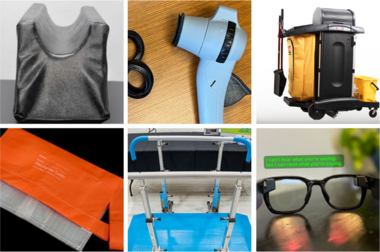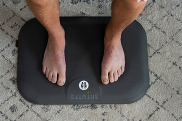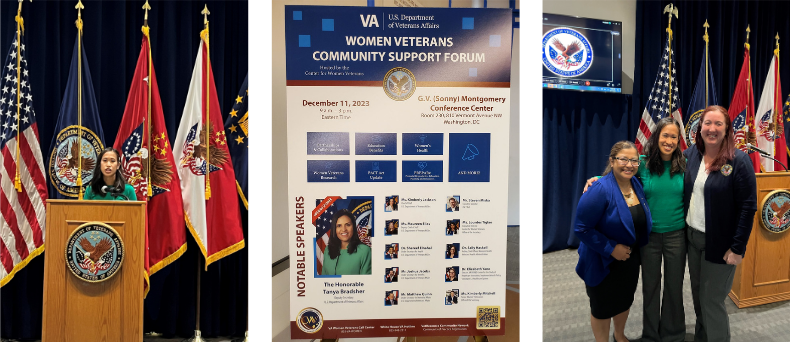|
|
|
Share this email with your colleagues to make sure they get the latest VHA IE news: SUBSCRIBE
|
|
|
|
The VHA Innovators Network (iNET) is a national community which empowers VA employees to engage in shared learning and design solutions to the healthcare challenges Veterans face every day. Each year, more frontline employees are engaging and innovating with iNET. The result is more employees developing solutions, including innovative, patented healthcare products.
Now, iNET has launched a new way to put these employee-developed innovative products into the hands of Veterans; the VA Intrapreneurial Product Marketplace (VAIPM). The VAIPM features frontline VA employee innovators, or “intrapreneurs”, and the products they have designed and developed for Veterans. Individuals can search the marketplace for products, learn more about the intrapreneur, the product audience, and purchasing information.
“These innovations not only turn a well-deserved spotlight towards the creativity and passion of VA frontline innovators, but they also herald the beginning of a new era of VA innovation,” said Allison Amrhein, Director of VHA Innovators Network. “Every healthcare system throughout the country can purchase these products."
Products were either designed and developed by VA frontline employees via the VHA Innovators Network Spark-Seed-Spread Innovation Investment and Accelerator Program or co-designed by frontline employees and external collaborators via iNET's Greenhouse Initiative.

Improving the Veteran Experience
Seven products are currently featured on the marketplace. The products are sorted by the intended audience. Veteran-use products are intended for use by a Veteran within a VA facility or in their own home. Facility-use products are intended for use by Veterans or VA staff within a VA facility.
Many of the products have already seen success in helping Veterans. For home-use, the Prosthetic Sock Management Tool (PSMT) helps individuals learn how to best use prosthetic socks to care for their residual limbs.
Many prosthesis users use prosthetic socks to manage volume fluctuation of their residual limb and improper usage of prosthetic socks can lead to painful wounds. This two-part tool helps clinicians visually demonstrate the proper way to use prosthetic socks and better manage the health of residual limbs.
Other products on the Marketplace include DropEase, a device that provides a stable platform for self-administering eyedrops, complete with a handle that is easy to squeeze with weak or shaky hands. The device allows users to set a metered dosage to get the proper amount of medication every time.
Some products are developed in conjunction with external partners like Wareologie Portable Parallel Bars, which fold in minutes, transport on wheels, and have a sturdy, 600 lb. weight capacity. The portable parallel bars are compact enough to maneuver into small spaces while providing ample area for the patient to stand, balance, practice weight-bearing, and take those first recovery steps.
VAIPM is now live, and you can visit the website and browse available products here. For more information or questions, you can email VACOVAIPMSupport@va.gov.
|
|
|

 Last week's VHA Innovator’s Network (iNET) fiscal year (FY) 2024, Spark-Seed-Spread Innovation Accelerator Bootcamp (Bootcamp) was filled with collaboration, creativity, and design-thinking activities. Over 250 individuals, including VHA Innovation Specialists, , and VA leaders throughout the country, came together to be inspired by innovation thought leadership, learn skills needed to practice human centered design (HCD), and network with like-minded passionate VA frontline employees. This annual three-day event kicked off with a race car prototype challenge where attendees broke into teams to interview each other, utilizing HCD discovery principles, and then build prototype cars from available materials (e.g. cardboard, paper plates, paint, putty, and more).
Before attendees headed into VISN breakout sessions, they heard from VA’s Assistant Under Secretary for Health for Discovery, Education and Affiliate Networks, Dr. Carolyn Clancy. She spoke about VA’s history of innovation, and highlighted the current innovation projects that are continuing to drive VA’s success in health care. “This room of change agents is proof that when we work together, we can do great things,” said Dr. Carolyn Clancy. “I'm thrilled about your work and encourage each of you to continue imagining better ways to serve our Veterans and strengthen our health care system.”
After lunch, Brent Aguilar, HCD Lead for iNET, led attendees in a workshop to accelerate their innovation journey by avoiding assumptions and asking the right discovery interview questions. Attendees ended day two creating solutions in breakout sessions with fellow employees at the same stage of maturity, based on the “Spark-Seed-Spread” investment level they are in.
On day three of Bootcamp, attendees gained insight on how to break down barriers when innovating, as well as a session highlighting the importance of designing with equity in mind. In the afternoon, they participated in a selection of innovation-inspired activities and puzzles, with a final networking activity where they rotated between three rooms, each focusing on a key fundamental takeaway of the entire event.
“Driving Innovation Forward” was the theme of this year’s Bootcamp. “This is just the beginning,” said Allison Amrhein, Director of VHA Innovators Network. “Investees will return to their facilities with the connections, lessons, and tools to advance both their individual projects and the culture of innovation at VA.”
|
|


Diabetes affects about one in four Veterans who receive VA care. For these Veterans, late-detected diabetic foot ulcers could lead to limb amputation. But they can avoid this by taking one simple step—onto an smart mat each morning. VA’s remote temperature monitoring program encourages Veterans to use the Podimetrics SmartMat in their podiatry care.
The mat can detect diabetic foot ulcers or other foot disorders as early as five weeks before they appear. Veterans with diabetes who are enrolled in the remote temperature monitoring program receive a Podimetrics SmartMat. They stand on the SmartMat once daily for 20 seconds, and it measures the temperature of their feet. If the mat detects an increase in temperature greater than 2.2 degrees Celsius at the same location of the foot for two consecutive days, Podimetrics notifies the Veteran and instructs them to check their feet for inflammation or swelling. If the temperature increase continues, Podimetrics alerts the Veteran’s VA podiatrist so they can begin care.
Remote temperature monitoring reduces clinic visits, hospital admissions, development of wounds, and, most importantly, amputations. “Reduction of ulcerations and amputations improves quality of life for Veterans,” said Dr. Robert Tang, Chief of Podiatry at the San Francisco VA Medical Center. “For a Veteran who has undergone a major amputation such as a lower extremity amputation, there’s a higher risk of developing a wound on the other side. The risk of mortality within five years is also very high, so it’s really important to prevent that.”
This effort began as a collaboration between VHA Innovation Ecosystem and Podimetrics in 2017 and has now been adopted at nearly 100 facilities. And VA is exploring more innovative projects to prevent diabetes-related limb loss. The Cincinnati VA Medical Center is conducting a field study to explore the efficacy of unique and promising monitoring technologies—including a smart insole and a smart sock.
Read more about the use of remote temperature monitoring solutions on Diffusion Marketplace and on page 29 of the 2023 VHA State of Innovation Report.
|
|
|

 Yesterday, 2023 VHA IE Senior Innovation Fellow Melissa Tran from the Orlando VA Health Care System presented at the Center for Women Veterans Women Veterans Community Support Forum in Washington, D.C. This forum provided an opportunity to exchange information on VA benefits, services, and initiatives as well as to discuss achieving shared goal of connecting Servicemembers, Veterans, caregivers, and family members to VA and community resources. Along with Deputy Secretary, Chief of Staff, Deputy Chief of Staff, and other key VA officials, leaders from various non-profit Women Veterans and community support-focused organizations engaged in meaningful dialogue on potential collaborative opportunities.
Tran provided attendees an overview of her project, Perinatal Reproductive Education Planning and Resources, or PREPARe, describing its mission to create accessible, in-house, specialized services that provide integrative care, education and support to Veterans and their families on their reproductive journey. Tran also highlighted PREPARe's alignment to multiple legislative policies and VA/VHA strategic priorities, and the first ever VA Maternal Health Summit which she hosted in July at the Orlando VA.
In this video, hear from, Naomi Mathis, U.S. Air Force Veteran, Assistant National Legislative Director for Disabled American Veterans (DAV) and Tran talk about PREPARe and the significance of its mission. Also, Frieda Martin, U.S. Army Veteran shares her inspiring testimony of how PREPARe changed her life.
|
|
|
|
|